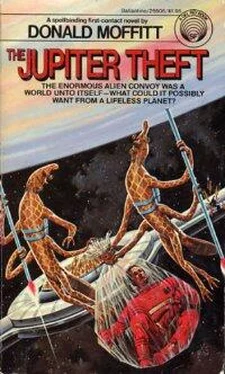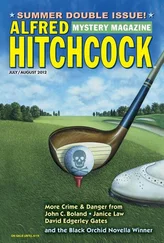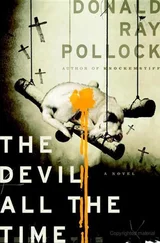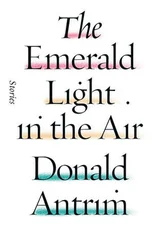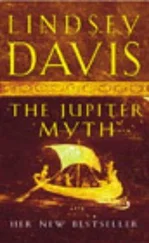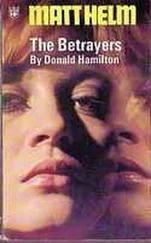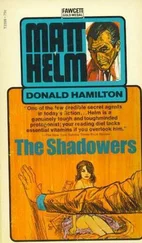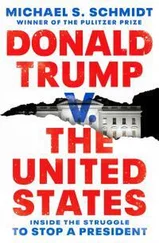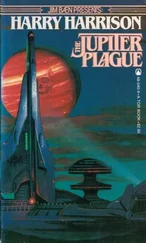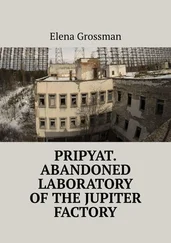“You were the astronomer who discovered it, weren’t you, Dr. Ruiz?”
“Maybury here was the first person to notice it,” Ruiz said. Maybury either lip and blushed. “But I was the nearest stuffed savant. That makes me the agreed-upon expert on the Cygnus object, and that’s why the authorities sent me along to complicate your lives. I’m sure your Dr. Pierce would have done a thoroughly competent job. Well, I’ll try not to interfere with him too much. He and his staff can carry out their Jupiter studies as planned. I have the greatest sympathy for him. It’s going to be a damned awkward situation.”
* * *
“Here we are,” Jameson said, stopping at a door marked astronomy. “The observation instruments are in the no-spin axle of the ship, of course. There’s an observatory near the bridge, but the readouts are down here, where the astronomy people can feel some weight on their feet.” He pushed the door open.
The meeting with Pierce went better than expected. The younger man was deferential. Fresh out of the Venusian Studies task force himself, he was awed by Ruiz’s eminence as former Farside director and ingenuously respectful of Ruiz’s pioneering studies on black holes and gravitational entropy. He pledged the full cooperation of himself and his staff, and managed to enlist Ruiz’s help on a problem involving the Jovian atmosphere sampling scoops. All the while he kept stealing sidelong glances at Maybury, looking guilty when he was caught.
Jameson could appreciate Pierce’s feelings. Maybury was a pretty little thing. He wondered if Ruiz was sleeping with her, then decided it was none of his business. He showed them to their quarters, two hastily cleaned out cabins adjoining an office with a computer terminal connected to the ship’s brain and some oddball peripheral equipment Ruiz had requested. If they were sharing a bunk, the old man could stumble through the connecting room.
“Dinner’s at eight, captain’s mess,” Jameson said. “Will we be seeing you?”
“I think not, Commander,” Ruiz said. “We’ll skip tonight. I’m a bit tired after the trip. I see that there’s an adequate kitchenette and a good selection of self-heating instameals. Mizz Maybury and I have some observational data to go through, and then we’ll have an early supper. I’m meeting with my Chinese counterpart, Dr. Chu, first thing in the morning, and I suppose I’d better be prepared.”
“Good night then, sir,” Jameson said, preparing to push himself off against the door frame.
“Good night, Commander,” Ruiz said. As Jameson launched himself down the corridor, he could see Maybury already punching something into a computer peripheral.
The Jupiter ship drifted among the stars, a gigantic hoop and stick perforated with light from its blazing ports. A blast from its attitude jets had nudged it a safe distance from Eurostation’s traffic and set it tumbling languidly.
On Earth, almost half the human race took a last look at the majestic image, gathered around holovids in their homes or watching the public viewplates that had been set up in communes and village schools, playing fields and places of work. Then the camera pinnace, hovering a prudent fifty miles away, zoomed in to the limit of its magnification, and the hoop became an enormous puffy doughnut, bumpy with outside structures, and the stick swelled to an immense cylindrical shaft, festooned with spherical tanks and sporting irregular bulges. Little spurts of flame flared from odd places along the shaft. Gradually the tumbling stopped. The ship held rock-steady, poised for flight.
Somewhere inside the long shaft, Chinese technicians bustled around a massive globate housing that bristled like a hedgehog with converging laser assemblies. Towering stacks of capacitors marched endlessly down the arched chamber. Pipes and cables disappeared through a thick bulkhead. On the other side of the bulkhead, a team of American technicians tended the dull bulging shapes of cryogenic storage vats and monitored a bewildering array of computer displays.
A walnut-size pellet of boron dropped into a vat. It was hollow on the inside, and beautifully machined, with twelve precise pinholes slanting through its jacket. It was immediately stuffed with a tiny snowball made of frozen deuterium and tritium.
A computer on the American side of the bulkhead positioned the pellet to within an angstrom and fired it through a long pipe into the chamber of the Chinese device. All the lasers fired at once in a burst that lasted only a few picoseconds. They were computer-controlled by a single oscillator on the American side. This was the point that had caused so much trouble. It had taken two years of diplomatic negotiations at the highest level before a way was worked out for the sensors and timers to be slaved to the U.S. computers through a scrambler program. The Chinese had never seen a pellet, nor was there any way they could extract the vital details of size, density, or timing from their own computer replays—though they had dismantled their own equipment many times in an attempt to gain clues from the pellet delivery pipe and the physical arrangement of the electronics interfaces.
Twelve thread-thin beams of coherent light blasted through the pellet’s pinholes and converged at the center of the snowball. A tiny volume of space turned into hell. A few cubic microns of hydrogen isotopes became ten times hotter than the interior of the Sun. The fusion reaction became self-sustaining. The pressure of the blast crushed superheated plasma to the awesome density of degenerate matter, and held the pellet together for the few picoseconds needed to initiate the next stage of the reaction.
For hydrogen fusion, a mere 200 million degrees Fahrenheit had been sufficient. For boron fission, a temperature in the billions of degrees was needed. Fusion was only the trigger. The raging nuclear fury in that tortured speck of matter stripped hot protons from surrounding hydrogen atoms and drove them with incredible energy into the now-collapsing nuclei of boron-11 atoms. The extra proton was too much for the boron nucleus to hold. Each atom split into three helium nuclei. The energy released was tremendous—far more than the controlled fusion energy that mankind had unlocked a half century before. A stream of electrically charged helium nuclei sought their mad escape rearward through the ship’s nozzles.
The ship trembled and moved.
Another pellet dropped. Another chamber turned into hell. Then, three seconds later, another. And another.
The ship, shuddering, picked up speed. It was accelerating rapidly now, at one percent of a g. On Earth, an estimated seven billion people watched the ship dwindle on their screens.
They watched it until it was small and indistinct, a ghostly target pierced by a glittering arrow. A silver phi sketched against the void. A needle encircled by a wedding ring, pointing itself toward a star.
When Jameson staggered into his quarters after his first twelve-hour watch, Maggie had a mug of steaming coffee and a hot beanie waiting for him. He wolfed the crisp, paste-filled cone down gratefully. “Thanks,” he said. “I didn’t have a chance to eat. It was wild on the bridge. The skipper’s still up there. Have you had anything?”
She gestured at a half-eaten beanie, its fragile rice-flour wrapping spilling out a congealing green sludge. “I was too excited. Are we really on our way?”
He nodded. “Everything got straightened out a couple of hours ago, when you felt us put the spin back on. The engine’s working beautifully. We won’t have any more trajectory corrections till tomorrow. By that time the computer should have accumulated enough data to tell us how much longer those damn bomb blisters are going to make us keep the boost on.”
Читать дальше
